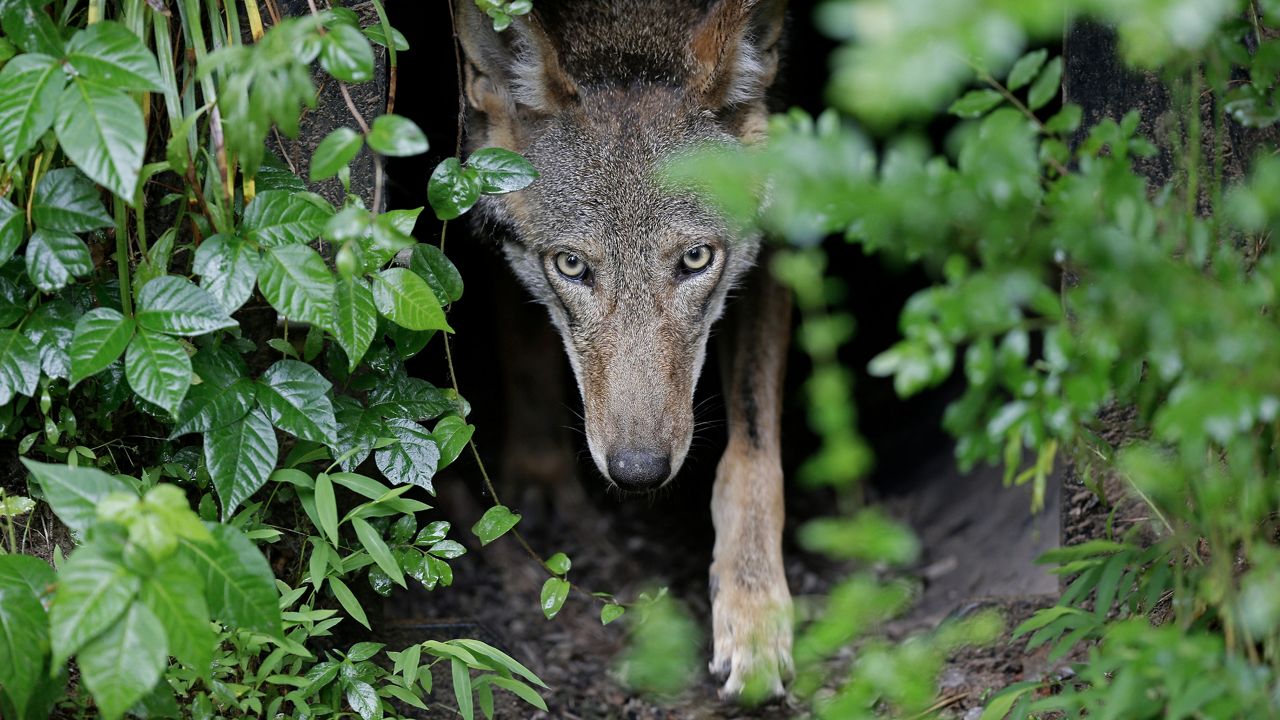Red wolves were essentially extinct in the wild until a federal program began releasing a couple of captive wolves each year in eastern North Carolina more than three decades ago. The wild population grew to more than 100, and they were having pups on their own.
In 2015, the U.S. Fish and Wildlife Service stopped releasing the endangered wolves around the Alligator River National Wildlife Refuge. People in the area were allowed to hunt the red wolves.
The population crashed. Now there are seven known red wolves left in the wild, all in eastern North Carolina. There could be up to another dozen red wolves in the area that are not being tracked by conservationists.
“This was a longstanding and highly successful practice the Fish and Wildlife Service has used every year for 27 years and then stopped,” said Sierra Weaver, an attorney with the Southern Environmental Law Center.
“This was one of the most successful predator reintroductions in U.S. history. It was a model for the reintroduction of wolves to Yellowstone,” she said in an interview with Spectrum News 1. “The agency has always known what to do, they just needed to rediscover their backbone, rediscover the science and recommit to this population in North Carolina.”
A federal judge in Raleigh just ordered the Fish and Wildlife Service to begin releasing wolves from captive breeding programs back into the wild. The FWS has until March 1 to come up with a new plan to begin releasing wolves again in eastern North Carolina.
Red wolves are smaller than their more well-known cousins the grey wolves. They once roamed up and down the east coast and as far west as Texas. But hunting and habitat loss almost killed off the species. By the 1980s, the only red wolves left were in captivity.
The program to reintroduce red wolves in eastern North Carolina started in 1987. The wild population peaked at 130 in 2012. But three years later, FWS stopped releasing more wolves in the area and allowed people to hunt the wolves that were still there.
The FWS also stopped sterilizing coyotes in the area, which was meant to stop the wolves from cross breeding.
Since 2015, conservationists have sued the federal government several times to stop the hunting of the wolves and get the program back on track.
The Southern Environmental Law Center, representing the Red Wolf Coalition and two other environmental organizations, filed this latest suit in November.
Judge Terrence Boyle granted the preliminary injunction to restart the program on January 21.
According to the federal judge’s order, the FWS is making plans to release two new pairs of red wolves in eastern North Carolina. He said the current policy of not releasing anymore wolves “likely violates the Endangered Species Act.”
“We are grateful that the U.S. Fish and Wildlife Service will finally abide by its responsibility to protect this critically endangered wolf,” said Ben Prater, with Defenders of Wildlife, one of the plaintiffs in the case.
“Releasing wolves into the wild is a common sense, science-backed approach to boost this population and stave off the red wolf’s extinction. While the species has a long way to go, this is a major step in the right direction,” he said in a statement.
“This is a vital ruling that will breathe new life into the Red Wolf Recovery Program,” said Johanna Hamburger, with the Animal Welfare Institute, another plaintiff. “By ordering the agency to once again release wolves from captivity into the wild population, the Court is requiring much-needed action to prevent the continued downward spiral of this species.”




